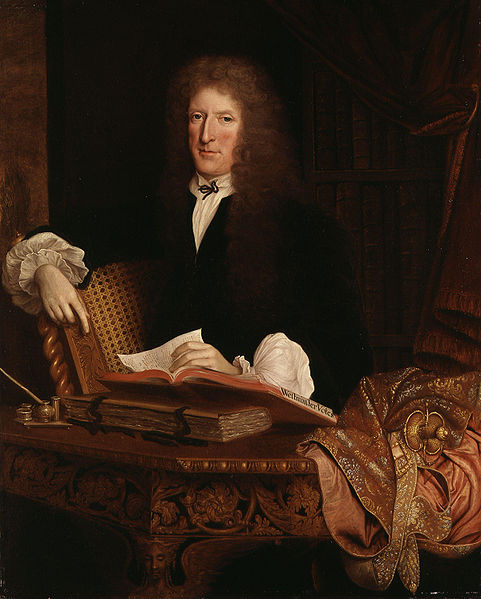(4 of 4)
Local aristocrat convicted of spying and treachery. Execution date fixed for 2 January.
“Sir, God hath taken away your son by cannonshot …”
Letter from Oliver Cromwell to Colonel Walton
The Siege of Lynn: Afterwards
On a military scale the siege of King’s Lynn was a relatively minor affair, but it had great significance for the town and for Norfolk.
The surrender of the town to the Parliamentarian troops on 16 September 1643 kept the eastern counties clear of military operations for the first Civil War. Lynn also became a garrison town for the duration of the war with all the social and financial burden associated with that. Initially the Corporation offered £10,000 in order to avoid having troops stationed, but the request was denied and the burden imposed.
Security, Money, and Reconstruction
There were heavy direct costs to pay, despite (and in one case, because of) the negotiated settlement (see The Siege of King’s Lynn 3 – Ending). The town had to immediately raise £2,300 to pay the agreed fee to the occupying army to prevent looting. There were properties to rebuild. Also damaged or weak spots in the fortifications had to be repaired and the defences modernised, ultimately creating a bastioned enceinte surrounding the town. Lynn tradesmen accumulated debt because the army could not pay for the supplies that it consumed (money which was not paid back to the town until 1649).
The security of King’s Lynn was taken so seriously because it was important to the Eastern Association. Up until early September 1644 Lynn was the main depository for arms and ammunition for the Association. Munitions were received from London and then redistributed via a network of inland waterways. Flintham argues that thanks to the designs of Richard Clampe (Lynn engineer and doctor), King’s Lynn was transformed into the strongest fortress in East Anglia.
Regardless of what people may have wanted the reconstruction of the town was a slow process. Five years after the siege, the Commons were informed “that the town of Lyn Regis did want much repair, being ruined by these times of war”. In 1646 Thomas Toll had to write to the Mayor of Norwich asking for financial assistance.
Inevitably some people profited from the siege. Colonel Walton bought quantities of arms from small local traders throughout 1644, but major contracts fell to larger operators. Early in 1644 a Lynn merchant, Batholomew Wormell provided munitions from the Netherlands valued at nearly £8,000.
Individuals

The L’Estrange family especially felt the consequences of their decision to encourage the town to support the King. Sir Hamon L’Estrange was held responsible for the greater part of the fabric damage, although Mayor Gurlin’s heirs and Captain Clench are also mentioned contributing to compensation. The account books for the L’Estrange family have some interesting entries for this period. Lady L’Estrange claims that in 1643 1600 sheep and all their corn and divers horses had been plundered, and it is estimated that they paid £1088 over a six year period “by the unjust and tyranical oppression of Mr Toll and others of his faction in Lynn”. One is left in no doubt about her feelings as Alice L’Estrange records having to pay compensation for several “pretended losses”.
Roger L’Estrange
Towards the end of 1644 Sir Hamon L’Estrange’s youngest son, Roger, reached the King in Oxford and managed to persuade him incorrectly that the spirit of resistance was strong in Norfolk. Roger L’Estrange also persuaded him that he, Roger, was the person to be entrusted with organising and leading an uprising. Armed with a document from the King authorising sedition, Roger arranged a meeting at a sympathetic household (the Paston’s of Appleton) where he planned to bribe a man to organise resistance in the town. In Oxford Roger had met a Lynn sea-captain called Leaman and Roger felt he was a Royalist whom he could trust. Roger offered Leaman £1000 to organise Royalist resistance in the town, but Leaman immediately told Walton about the plans.

Roger L’Estrange was arrested, tried, and convicted of being a spy and a treacherous conspirator. His execution was fixed for 2 January 1645. After a plea he was reprieved and spent three years in Newgate prison. Depending on which account you believe, he either escaped or was released. He later went on to play a leading part in the Royalist uprising in Kent in the Second Civil War, after which he has to flee to Holland. Roger is eventually pardoned by Cromwell, knighted by James II (partly for his support of the Royalist cause in his writings), and is put in charge of controlling the press. He died in 1704.
Sir Hamon L’Estrange
Although Sir Hamon L’Estrange avoided the immediate sequestration of his land, it was subsequently seized in 1649 and he didn’t regain benefit from it until 1651. In addition he finally lost a long-standing and extremely expensive court case against a Heacham tenant farmer which had been running since the 1630s. In old age he suffered a lot from gout and died in 1654.
Further Unrest
Despite the clear loss of the town to the Parliamentarians there seemed to be a small Royalist undercurrent that occasionally asserted itself and gave the fuel to the King’s misguided hopes. On 6 April 1644, completely ignoring the surrender of the town and Walton’s position, the King vainly issued a warrant from Oxford appointing Colonel Jervase Hollis governor of Lynn.
In 1645 there was a stand-off between the town and Parliament over who should replace John Percival, the Parliamentarian supporting MP who had died. The town audaciously wanted to have Edmund Hudson who had been Mayor-elect at the time of the siege and who was a man of known Royalist sympathies. Parliament ignored the request for years, and it wasn’t until after the King’s death in 1649 that the Earl of Salisbury was elected to represent Lynn.
In 1650 an insurrection of royalists now took place in the county, and the garrison from Lynn was used to suppress it. One Royalist Major Saul was captured and then hanged in the Tuesday Market-place.
Colonel Valentine Walton
Colonel Walton’s fortunes were mixed after the siege. Although he lived for another twenty-one years and was made a Deputy Lieutenant of Norfolk on October 24th 1643, he suffered a lot of personal tragedy. He had married Cromwell’s sister Margaret in 1617, but sadly she died in Lynn in 1644. In the same year his son, also Valentine, was killed in the Battle of Marston Moor. Walton received the news from Cromwell in a letter beginning, “Sir, God hath taken away your son by cannonshot …” As Walton had participated in the trial of Charles I and had his name on the death warrant, he was excluded from the Act of Indemnity after the 1660 Restoration. He had to leave his second wife behind and escape to the Continent where he became a burgess of Hanau in Germany. After a while he decided to go into obscurity in the Lowlands as a gardener and dies in 1661. His abandoned second wife died in poverty in Oxford in 1662.
Restoration
The rulers of King’s Lynn acknowledged the undoubted birth right of Charles II when he was restored to the throne on 29 May 1660. Church bells rang in the town, bonfires were lit on Tuesday Market Place, guns at St Ann’s fort were fired, and alcohol flowed. Three hundred maidens dressed in white paraded through the town, and members of the corporation dressed in scarlet robes processed to St. Margaret’s Church to hear a sermon.
Seventeen years is a long time in politics.
Previously
- The Siege of King’s Lynn 1643 (1 of 4) Which Side?
- The Siege of King’s Lynn 1643 (2 of 4) Grenadoes
- The Siege of King’s Lynn 1643 (3 of 4) Ending
See also A King’s Killer in King’s Lynn.
Book a Walk with a Trained and Qualified King’s Lynn Guide Through Historic Lynn.
Sources
- Flintham, D. (2018) Richard Clampe, Fortress Engineer, c1617-1696, FORT vol.46, pp.3-14
- Hillen, H.J. (1907) History of the Borough of King’s Lynn, Vol.1, EP Publishing Ltd.
- Holmes, C. (1974) The Eastern Association in the English Civil War, Cambridge University Press
- ‘House of Commons Journal Volume 4: 5 May 1646’, in Journal of the House of Commons: Volume 4, 1644-1646 (London, 1802), pp. 534-535. British History Online http://www.british-history.ac.uk/commons-jrnl/vol4/pp534-535 (accessed April 2021)
- Ketton-Cremer, R.W. (1985) Norfolk in the Civil War: A Portrait of a Society in Conflict, Gliddon Books
- Kyle, C. https://www.historyofparliamentonline.org/volume/1604-1629/member/lestrange-sir-hamon-1583-1654 (accessed April 2021)
- Richards, P. (1990) King’s Lynn, Phillimore
- Richards, W, (1812) The History of Lynn, Vol. 2, The Gutenberg Project eBook
- Withers, A. (2023) Great Staughton And Its People, Unknown
- Yaxley, S. ed. (1993) ‘A briefe and true Relation of the Siege and Surrendering of Kings Lynn to the Earle of Manchester’. In Yaxley, S. (1993) The Siege of King’s Lynn 1643, The Larks Press
© James Rye 2021

[…] The Siege of King’s Lynn 1643 (4 of 4) Afterwards […]
[…] The Siege of King’s Lynn 1643 (4 of 4) Afterwards […]
[…] The Siege of King’s Lynn 1643 (4 of 4) Afterwards […]
[…] the surrender and the occupation by the Parliamentarians who based a garrison in the town for a number of years, Manchester initially used Toll’s house as his military headquarters. […]
[…] The End of the Civil War in King’s Lynn […]
[…] secret meeting with the seaman at the Paston’s in Appleton was nearly fatal for Roger from Hunstanton. The seaman (perhaps sensibly) decided that the risk […]
[…] The Siege of King’s Lynn 1643 (4) – Afterwards – circato https://circato.co.uk/the-siege-of-kings-lynn-1643-4-afterwards […]
[…] The Siege of King’s Lynn: Afterwards […]
[…] The Siege of King’s Lynn 1643 (4 of 4) Afterwards […]